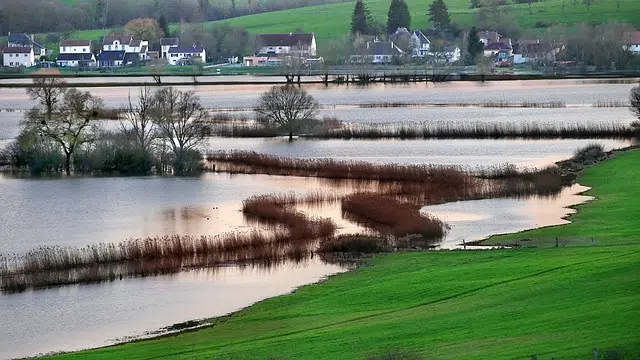
Runoff is a current that arises when a channel cannot contain water.
Rainwater that moves over a surface is called runoff . The term also refers to the current that is formed when a channel, whether artificial or natural, is unable to contain the water.
an external current
If the mechanisms arranged for water to drain are insufficient, runoff is generated on the surface ( surface runoff ). The same thing happens when a tank overflows and water begins to flow outwards.
Runoff appears when the soil does not have sufficient infiltration capacity for the flow of water. Thus the water begins to accumulate and a kind of sheet is produced that circulates over the ground .
It can be said at a general level that part of the precipitation infiltrates into the soil and another part is lost through evotranspiration . The rest forms runoff, which is an agent of erosion .
Runoff, in short, is a flow of water over a surface . Many times this current carries polluting substances.
Types of runoff
It is important to keep in mind that, in addition to surface or direct runoff , there is subsurface runoff or hypodermic runoff (water that, once infiltrated, moves horizontally until it returns to the surface) and underground runoff (that circulates in the water table ).
Runoff coefficient
The relationship that exists between the water that falls in a certain area and the water that flows is called the runoff coefficient . This coefficient depends above all on the infiltration capacity of the soil and the intensity of rainfall.
In this context we must talk about the concept of runoff index : it is a term specific to the field of hydrology that represents the product of the relative flow of a river in a portion given by 31.557 (a constant).
The relative flow is also known as the relative module and is the relationship between the absolute flow (the amount of water transported by a river at a specific time) and the area of the basin.
Issues that affect her
Runoff is affected or influenced by different parameters, some of which have already been mentioned above:
* the height of precipitation per unit of time. This concept is called precipitation intensity and is usually expressed in millimeters per hour;
* the infiltration capacity of a given part of the soil. This concept is defined as the maximum speed at which water infiltrates the soil, and also depends on certain factors, such as permeability ;
* the hydraulic condition of the surface, whether it is a rock or part of the soil;
* the hydraulic characteristics of these two components.
Soil conditions
By comparing these variables it is possible to find information about the processes that occur in various situations. The soil conditions when precipitation occurs have a considerable impact on runoff. The possibilities are the following:
* The infiltration capacity exceeds the intensity of precipitation and the soil has a degree of humidity lower than its capacity. In this case, runoff occurs sparingly, since the soil can absorb much of the water ;

Depending on certain factors, runoff can be little or considerable
* similar to the previous one, but with an amount of humidity close to or equal to the capacity of the soil. There is also little runoff. This situation usually exists as a consequence of extensive precipitation , and continuing the previous one;
* The infiltration capacity is less than the intensity of precipitation and the surface humidity is less than its capacity. Runoff is relatively low, as the soil uses some of the water ;
* similar to the previous one but with the capacity saturated or close to saturation. Runoff occurs at a considerable level.
